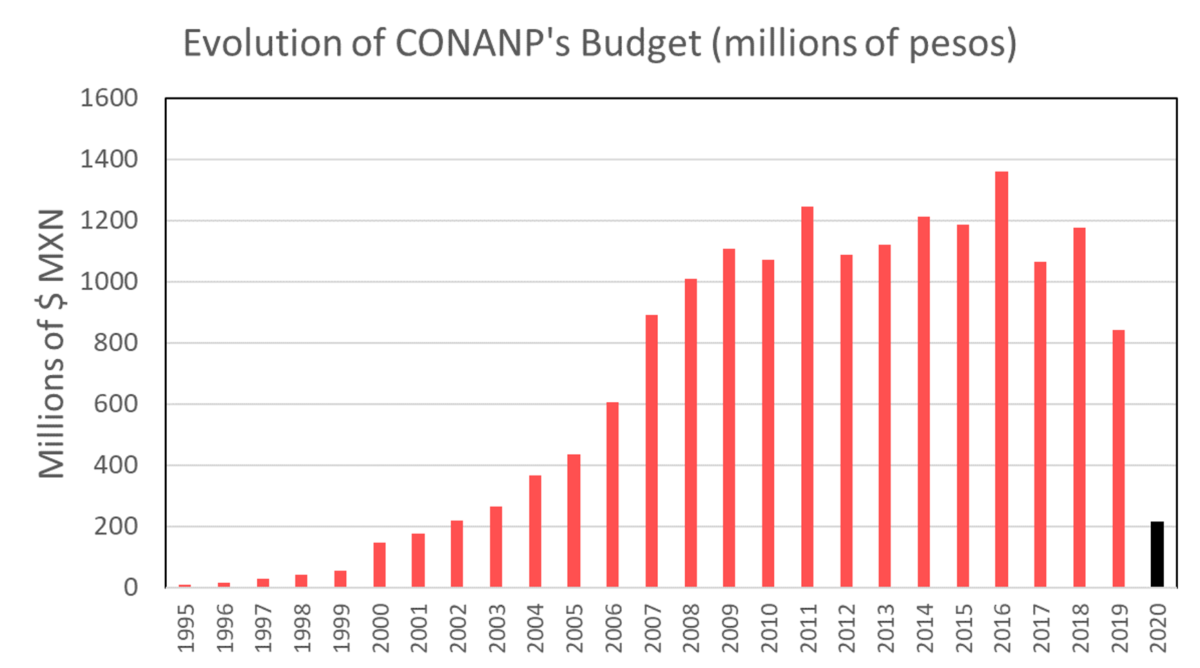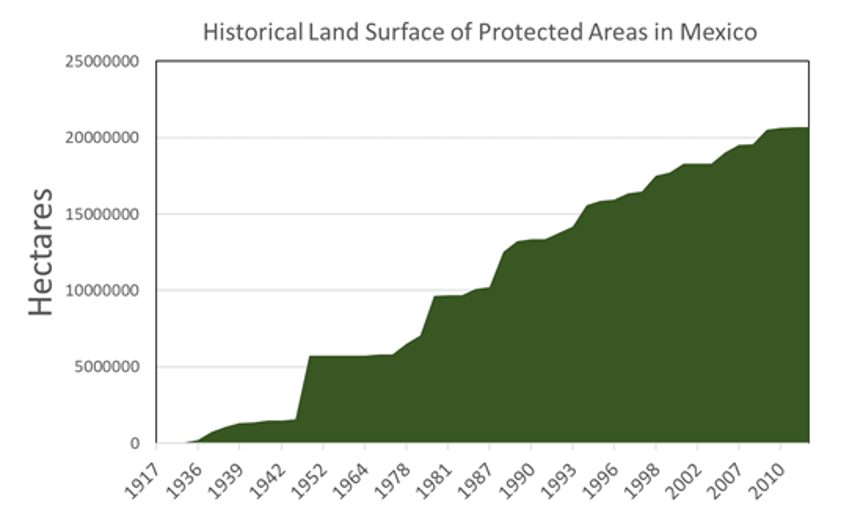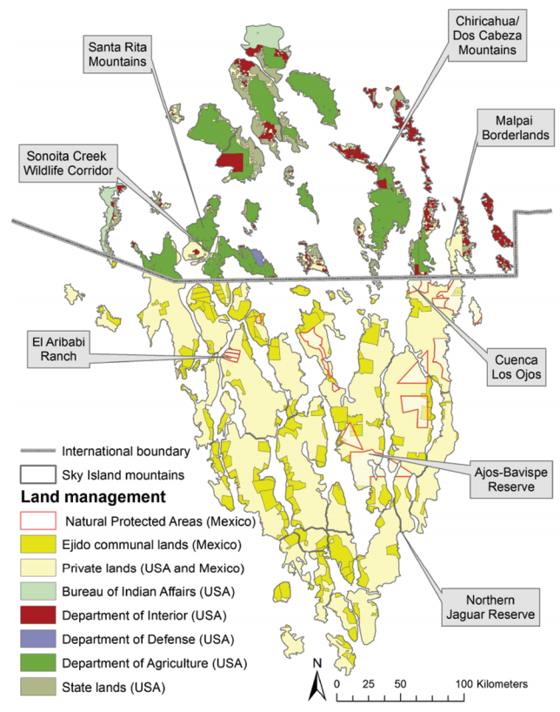Ignored for many decades, Protected Areas (PAs) in Mexico finally got the attention of the federal government in the mid ‘90s thanks to the demands of civil society and prominent environmental groups. Between 1996 and 1999, a series of new PAs were decreed and a wave of increasing funding for conservation research and policy allowed the recruitment of prominent scientists and policy makers into the federal government, laying the foundations of what would be one of the fastest growing conservation and environmental government sectors in Latin America. On June 5th of 2000, as a way of honoring the World Environmental Day, Mexico gave birth to the National Commission of Protected Areas (CONANP), an equivalent to the National Park Service in the U.S., and one of the greatest achievements of the conservation movement in the history of Mexico.
Today marks the 20th anniversary of the creation of CONANP. However, this time, Mexico is far from having anything to celebrate, as the current administration of president López Obrador has decided to defund the agency to levels that make it virtually impossible for CONANP to fulfill its mandate of protecting the natural capital of one of the most biodiverse countries in the world. On Wednesday June 3rd, budget cuts of 75% were announced for CONANP and 200 employees of the agency will be immediately laid off. This includes park rangers, field staff, and regional level employees that run critical programs on which thousands of communities depend.
The massive budget cuts are systemic, as other valuable institutions for natural resources management such as the National Forestry Commission (CONAFOR) are also being financially undermined. The decision to defund the environmental sector has been justified by the Mexican government as a strategy to combat corruption and transfer resources to fight the economic crisis caused by the COVID-19 pandemic. However, as many other organizations and experts have pointed out, at the same time the Mexican government has decided to abandon its environmental and conservation institutions, it is spending millions of dollars on new oil refining projects and on the construction of the Maya Train, a project with no environmental impact assessment that will cut in half the Biosphere Reserve of Calakmul, home to the largest population of Jaguars in Mexico.
As a binational organization with a long history of conservation research and stewardship in northwestern Mexico, we join the outcry and demands of the conservation community in the country. Our concern is with the integrity of the ecosystems of the Sky Islands region of Mexico, and with the human communities that depend on them. Now, more than ever, we will continue to support our partners in Mexico – including CONANP – to protect this ecologically unique corner of the planet.

Budget evolution of CONANP: The current administration of president López Obrador began in December 2018. The black bar in 2020 indicates the remaining budget of CONANP if the announced budget cuts take effect. Source Fundar.org.mx

Land Protection by CONANP: Historical accumulation of land area under protection by the federal government in Mexico. Created in 2000, today CONANP is responsible for protecting and managing approximately 14% of the land in Mexico. If we were to include marine Protected Areas the surface under CONANP´s administration quadruples to more than 90 million ha. Source: CONANP, 2016
Quick facts and links:
- Here you can see an interactive map of all PAs and MPAs of Mexico and their management categories
- This is the website of the National Commission for the Use and Knowledge of Biodiversity (CONABIO) an excellent research agency that is also being threatened by the current administration. Here you can find additional information on Mexico´s PAs and learn a lot about Mexico´s biodiversity
- Why are Mexican PAs so important to Mexico and to the entire world? Here is why, in the world Mexico ranks:
- 4th in plant biodiversity (25,000 species)
- 4th in amphibian biodiversity (282 species)
- 2nd in reptile biodiversity (757 species)
- 2nd in mammal biodiversity (439 species)

Protected Lands in the Sky Island: Sky Islands of Mexico and the U.S. color coded by land ownership type and showing the polygons of PAs in Mexico in red. Source: Villarreal, Miguel & Haire, Sandra & Bravo, Juan & Norman, Laura. (2019). A Mosaic of Land Tenure and Ownership Creates Challenges and Opportunities for Transboundary Conservation in the US-Mexico Borderlands. 10.1525/cse.2019.002113.
